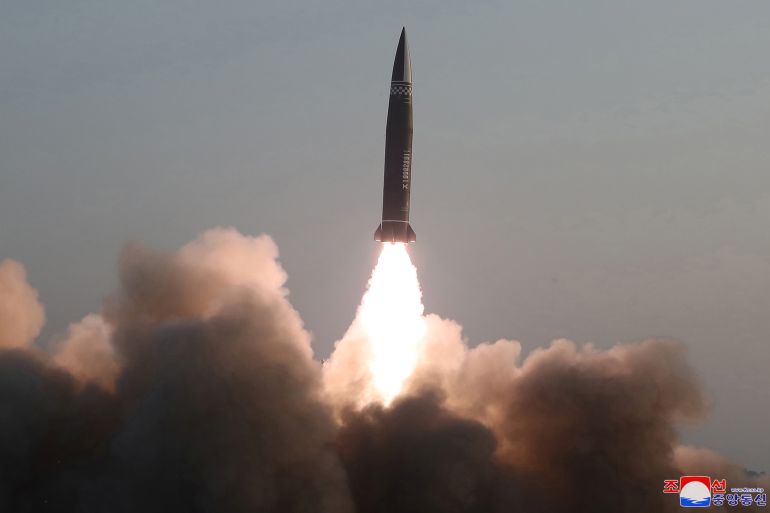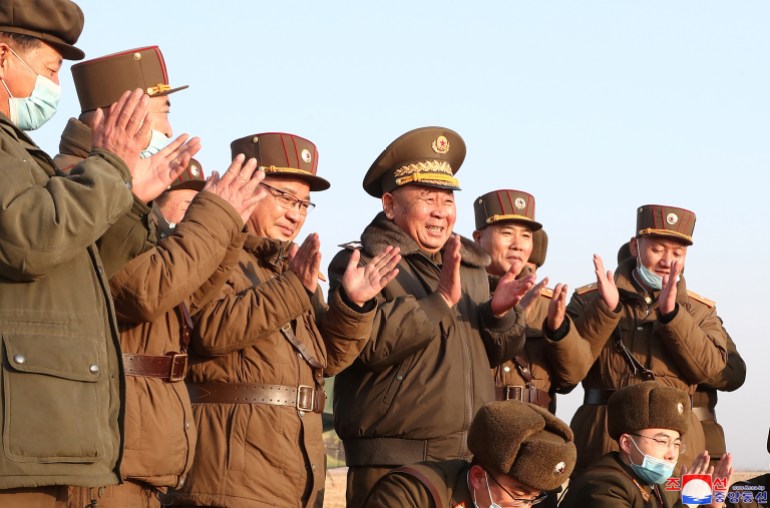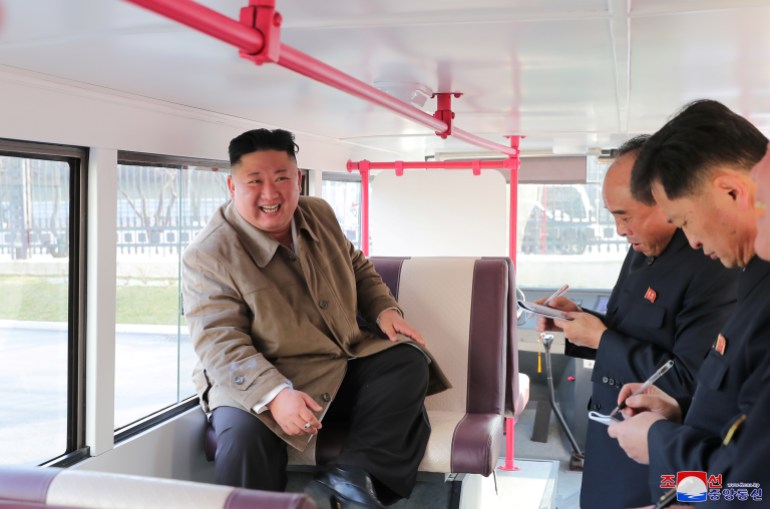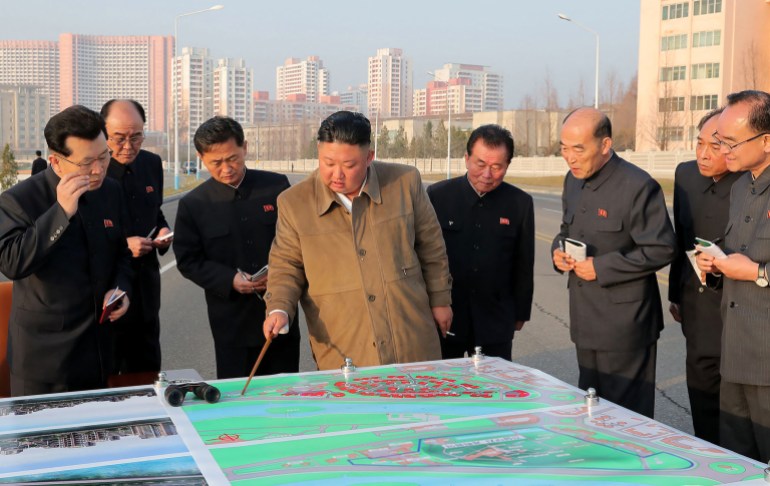Biden says N Korea at top of US agenda after banned missile test
In first press conference since taking office, Biden cautions Pyongyang as it confirms it tested a ‘tactical projectile’.

United States President Joe Biden said North Korea was top of his foreign policy agenda, after the nuclear-armed state confirmed on Friday it had launched a new type of short-range “tactical projectile” in a move that highlighted the military advances it has made in recent years.
State news agency KCNA said the weapon could carry a payload of 2.5 tonnes, but avoided using the words “missile” or “ballistic”.
Keep reading
list of 4 itemsTimeline: North Korea’s weaponised diplomacy
North Korea tested missiles over the weekend: US, South Korea
North Korea says no talks with US while ‘hostile policy’ in place
The country is banned from testing such weapons under United Nations Security Council resolutions, but Japan said on Thursday that Pyongyang had fired two ballistic missiles.
Biden told reporters that UN resolution 1718 “was violated by those particular missiles that were tested” and that the US was discussing the situation with its allies.
“There will be responses if they choose to escalate,” he warned Pyongyang. “We will respond accordingly.”
The launches took place hours before Biden held his first White House press conference since taking office in January.
When asked if he agreed that North Korea was the top foreign policy issue he faced, Biden replied: “Yes.”

North Korea was left out of Biden’s first foreign policy speech in February, and, in outlining eight diplomatic priorities earlier in March, his secretary of state did not address North Korea except to list it as one of several countries that pose a challenge.
While North Korea’s intentions were not yet entirely clear, Thursday’s tests were relatively restrained, John Delury, a professor at South Korea’s Yonsei University, told Reuters news agency.
“These tests come some time after Biden’s inauguration, and they are still at a low enough level that it gives the administration breathing room,” he said. “Regardless of North Korea’s intentions, however, the effect is to elevate the significance and move it up the administration’s agenda.”
Others questioned the emphasis on North Korea, given the challenges posed by China. A US review of North Korean policy is due to wrap up soon.
“It’s a problem, but it’s not a direct threat to the United States,” Doug Bandow, a senior fellow with the Cato Institute, told Al Jazeera. “Kim Jong Un is not going to attack America. He wants nuclear weapons as a deterrence. I think China is, without question, the number one foreign policy priority.”
Military power
North Korea’s state news agency said the new weapon was based on enhancements to existing technology.
“The development of this weapon system is of great significance in bolstering up the military power of the country and deterring all sorts of military threats,” KCNA quoted Ri Pyong Chol, the senior leader who oversaw the test, as saying.
The two projectiles successfully hit a target 600 kilometres (370 miles) into the Sea of Japan, known as the East Sea in Korea, the state news agency added.
Photos showed a black-and-white painted missile blasting off from a military launch vehicle, and Ri and other officers clapping.
Experts at the California-based James Martin Center for Nonproliferation Studies (CNS) said it appeared to be a missile that was unveiled at a major military parade in Pyongyang last October.
KCNA said Thursday’s test confirmed the weapon’s capability to conduct “low-altitude gliding leap type flight mode,” a feature that makes it harder to detect and shoot down.
International response
The United Nations Security Council North Korea sanctions committee is due to meet on Friday to discuss the missile tests, at the request of the United States.


The move suggests a measured response by the Biden administration, as the sanctions committee is comprised of lower-level diplomats from the 15 council members, rather than the ambassador-level council that convened at the request of several European countries after North Korea fired ballistic missiles a year ago.
While rejecting American overtures, North Korea has also used measured language, insisting that it will only return to talks if the US drops what it sees as hostile policies.
Analysts noted that leader Kim Jong Un did not appear to attend the Thursday missile tests, with state media instead showing undated photos of him inspecting passenger buses in Pyongyang.